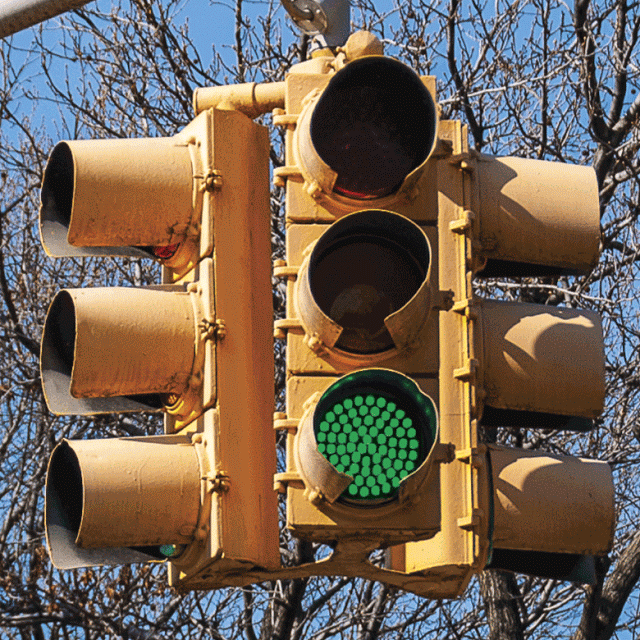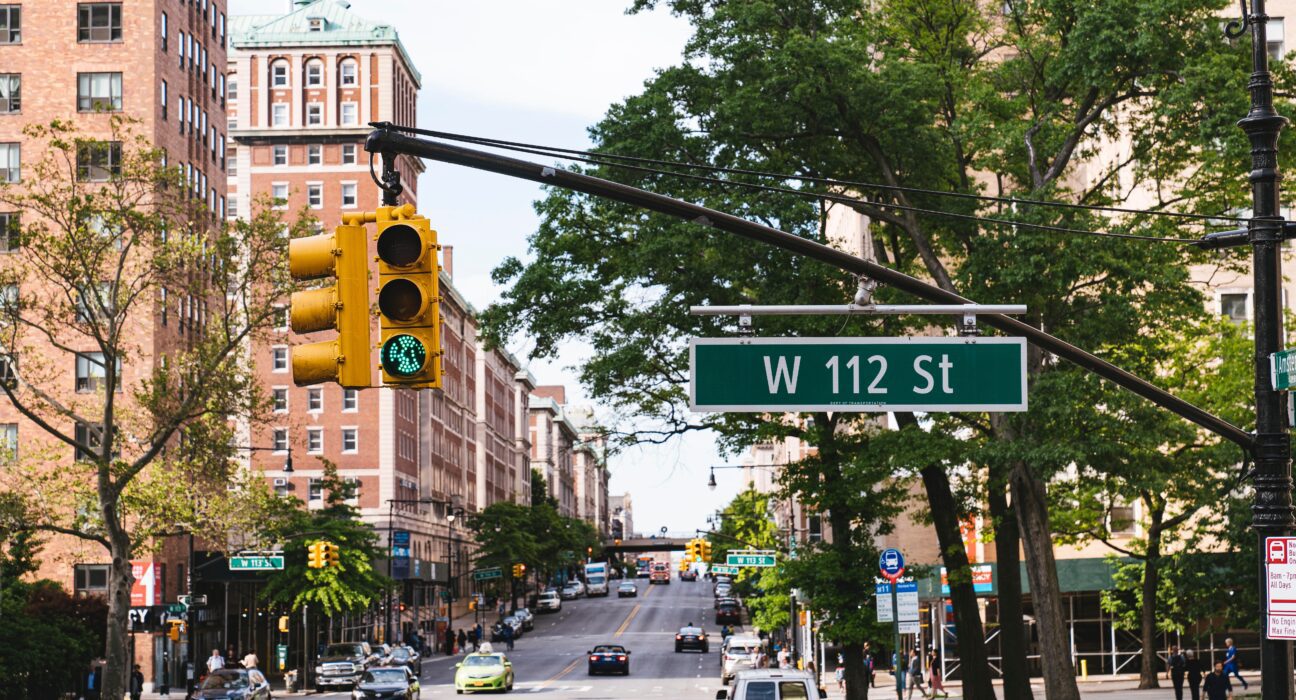Picture this: you’re driving through the bustling streets of London or cruising down the iconic roads of New York. Suddenly, you approach a traffic light, and here’s where knowing the difference becomes crucial.
In the UK, it’s a dance of red, amber, and green, but in the US, it’s a symphony of red, yellow, and green. Let’s dive into the fascinating world of traffic lights and explore six key differences between the UK and the US.
1. The colour sequence is slightly different
There is an ever so slight difference in the way that the colours appear on traffic lights across the UK and the US. The UK system is as follows: Green > Amber > Red > Red and Amber > Green.
While the US system goes: Green > Yellow > Red > Green. Which aside from using yellow instead of amber, also goes straight from red to green missing out yellow entirely. Below is an animation of how the sequence occurs.

2. American traffic lights are usually overhead
In the UK, traffic lights are typically mounted on poles at the side of the road, while in the US, they are often suspended overhead.
This placement difference can affect visibility, especially in areas with dense foliage or large vehicles obstructing the view of side-mounted lights.
3. Amber is just “yellow” in the US
In the UK, the color between red and green is officially called amber, while in the US, it’s simply referred to as yellow.
This may seem like a trivial distinction, but it can lead to misunderstandings. For instance, some British drivers might interpret the US yellow light as a sign to proceed, while American drivers might be caught off guard by the term “amber.”
4. Traffic lights (plural) and traffic light (singular)
Language matters, even at traffic lights. In the UK, you’d say you stopped at the traffic lights, emphasizing the plural. In the US, it’s singular – you stopped at the traffic light.
These linguistic subtleties highlight the diverse ways Brits and Americans navigate their shared language.
5. Pedestrian signals in the UK are often part of the traffic light
Strolling through a UK intersection, you’ll likely notice that pedestrian signals seamlessly integrate into the main traffic light assembly.
In the US, these signals often stand alone, providing a separate directive for those on foot. The subtle design distinctions cater to the different walking rhythms on either side.
6. You can turn at a red light in America
One of the striking differences lies in what you can do at a red light. In the US, making a right turn (when safe and after a complete stop) is often permissible.
Contrastingly, in the UK, the red light is a steadfast command to halt, with no room for turns until the light turns green.
7. Flashing lights mean different things
A flashing amber or yellow light means different things across the pond. A flashing amber in the UK indicates that you can proceed if it is safe to do so, i.e. no pedestrians crossing.
While in the US, a flashing yellow light is used to tell you to slow down and prepare to stop. This usually indicates an upcoming danger ahead such as a school crossing.
Final Thoughts from UK vs. USA
Navigating traffic lights is more than just obeying signals; it’s about understanding the cultural nuances that shape driving experiences. Whether you find yourself waiting at a London junction or a New York intersection, these differences add a unique flavour to the journey.
So, as you embark on the road, remember: it’s not just about stopping and going; it’s about embracing the subtle dance of lights that defines each driving experience.




